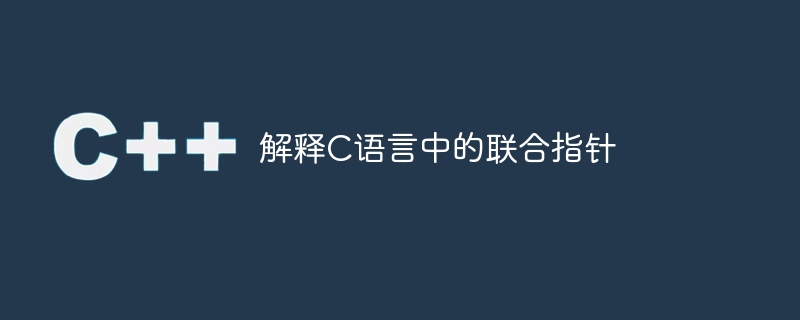解釋C語言中的聯合指針
- 王林轉載
- 2023-09-12 13:45:04726瀏覽

聯合是由不同資料類型的多個變數共享的記憶體位置。
語法
C 程式設計中指向聯合的指標的語法如下 -
union uniontag{
datatype member 1;
datatype member 2;
----
----
datatype member n;
};
範例
#下面的範例展示了結構體並集的用法。
union sample{
int a;
float b;
char c;
};聯合變數的宣告
以下是聯合變數的宣告。它有三種類型,如下所示−
類型1
union sample{
int a;
float b;
char c;
}s;Type 2
的翻譯為:Type 2
union{
int a;
float b;
char c;
}s;Type 3
的翻譯為:Type 3
union sample{
int a;
float b;
char c;
};
union sample s;當宣告聯合時,編譯器會自動建立最大尺寸的變數類型來容納聯合中的變數。
任何時候只能引用一個變數。
使用相同的結構語法來存取聯合成員。
點運算子用於存取成員。
箭頭操作符(->)用於使用指標存取成員。
我們可以使用指向聯合的指針,並使用箭頭運算符(->)來存取成員,就像結構體一樣。
範例
下面的程式展示了在C程式設計中使用指向聯合的指標的用法-
Live Demo
#include <stdio.h>
union pointer {
int num;
char a;
};
int main(){
union pointer p1;
p1.num = 75;
// p2 is a pointer to union p1
union pointer* p2 = &p1;
// Accessing union members using pointer
printf("%d %c", p2->num, p2->a);
return 0;
}輸出
#當上述程式被執行時,它產生以下結果−
75 K
範例2
考慮具有不同輸入的相同範例。
即時示範
#include <stdio.h>
union pointer {
int num;
char a;
};
int main(){
union pointer p1;
p1.num = 90;
// p2 is a pointer to union p1
union pointer* p2 = &p1;
// Accessing union members using pointer
printf("%d %c", p2->num, p2->a);
return 0;
}輸出
當上述程式執行時,它產生下列結果 −
90 Z
以上是解釋C語言中的聯合指針的詳細內容。更多資訊請關注PHP中文網其他相關文章!
陳述:
本文轉載於:tutorialspoint.com。如有侵權,請聯絡admin@php.cn刪除

